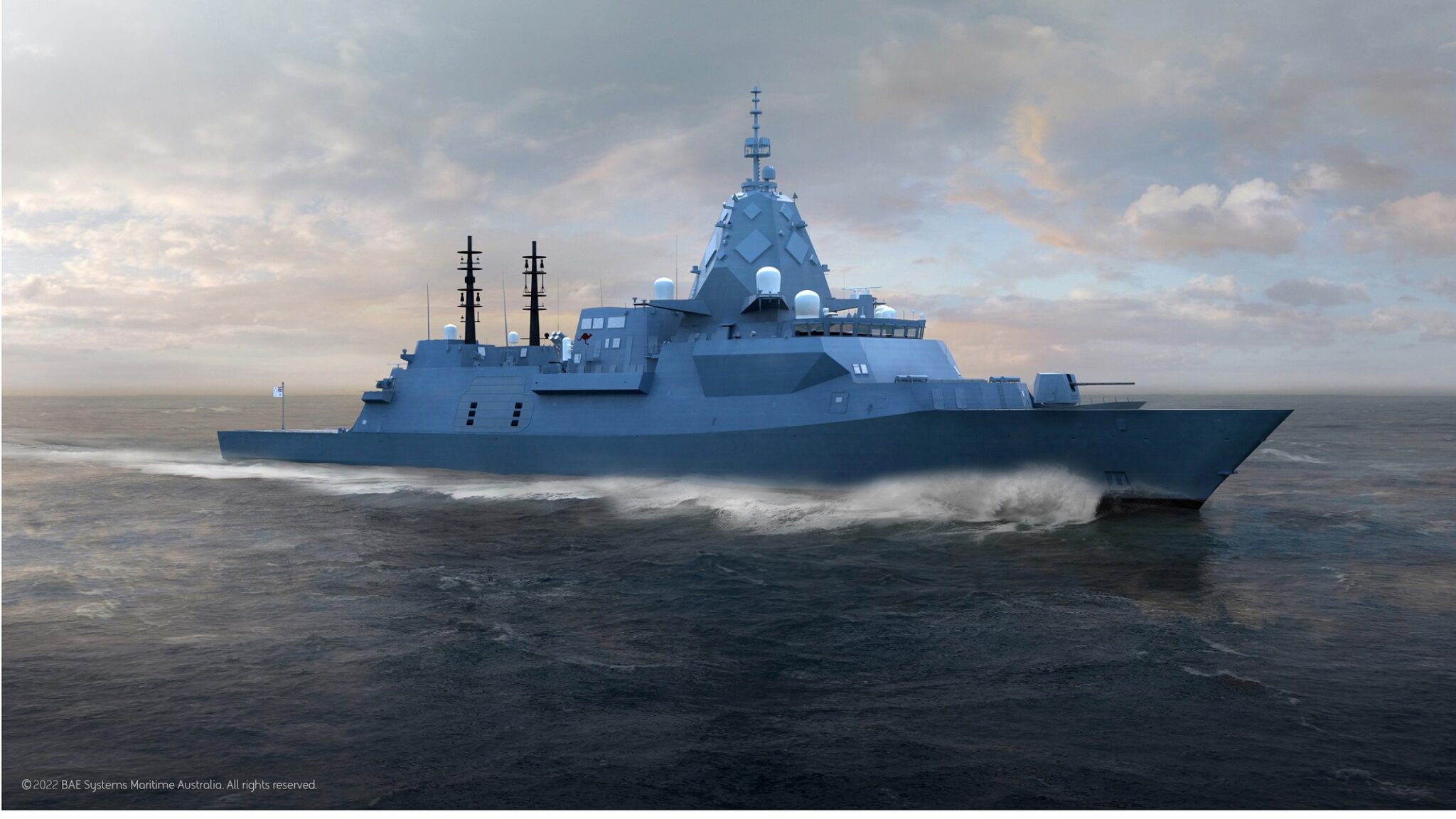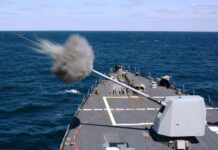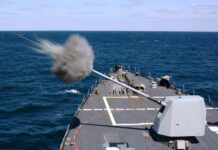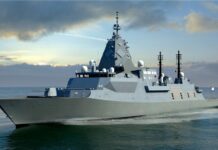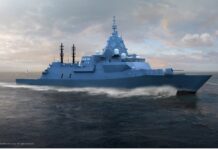The Australian government released its blueprint for a larger and more lethal surface combatant fleet for the Royal Australian Navy (RAN) on 20 February 2024. Its publication follows Canberra’s consideration of the recommendations of an independent analysis of the surface combatant fleet, commissioned in response to the government’s 2023 Defence Strategic Review.
Although the blueprint calls for fewer Hunter-class frigates than planned, it nevertheless envisages a more than doubling of the size of the RAN’s surface combatant fleet compared to the former government’s plan.
“The independent analysis of [the] navy’s surface combatant fleet lamented the current surface combatant fleet was the oldest fleet navy has operated in its history, and emphasised the need for immediate action to boost [the] navy’s air defence, long-range strike, presence and anti-submarine warfare capabilities,” the Australian Department of Defence (DoD) noted in its press release.
The DoD’s future plans consequently call for a RAN fleet that includes 26 major surface combatants consisting of:
Three Hobart-class air warfare destroyers with upgraded air defence and strike capabilities;
Six Hunter-class frigates to boost the RAN’s undersea warfare and strike capabilities (a reduction from the previous plan for nine such ships);
11 new general-purpose frigates that will provide maritime and land strike, air defence and escort capabilities;
Six new Large Optionally Crewed Surface Vessels (LOSVs) that will significantly increase the RAN’s long-range strike capacity;
Six remaining Anzac-class frigates from the current eight-strong fleet (with the two oldest ships to be decommissioned as per their planned service life).
The blueprint also accepted the independent analysis’ recommendations to have 25 minor war vessels to contribute to civil maritime security operations, including six offshore patrol vessels (OPVs).
The Hunter-class frigates will be built at the Osborne shipyard in South Australia, the construction of which will be followed by the replacement for the RAN’s Hobart-class destroyers, which will meanwhile be upgraded at Osborne with the latest US Navy Aegis combat system.
Construction of the new general-purpose frigates will be accelerated to replace the Anzac class, meaning their Transition Capability Assurance (TransCAP) upgrades are no longer required.
“These new general-purpose frigates will be modern, capable and more lethal, requiring smaller crews than the Anzac [class],” the DoD stated.
Consolidation of the marine industry precinct located at Henderson in Western Australia is currently underway, as recommended by the Defence Strategic Review.
“Successful and timely consolidation will enable eight new general-purpose frigates to be built at the Henderson precinct and will also enable a pathway to build six new Large Optionally Crewed Surface Vessels in Western Australia,” the DoD stated.
“The Albanese government is committed to continuous naval shipbuilding in Australia and the design of [the] navy’s future fleet will provide a stable and ongoing pipeline of work to the 2040s and beyond,” the DoD added.
In order to implement the recommendations of the independent analysis, the Australian government has committed to funding the planned acquisition and sustainment of the future surface fleet. This will see the government inject an additional AUS 1.7 billion (EUR 1.03 billion) over its Forward Estimates and AUS 11.1 billion over the next decade in defence overall for an accelerated delivery of the RAN’s future surface combatant fleet and to expand Australia’s shipbuilding industry.
This comes on top of the government of Australian Prime Minister Anthony Albanese investing an additional AUS 30.5 billion to the DoD’s Integrated Investment Program out to 2032-33.
“This additional AUS 11.1 billion of funding for the future surface fleet alone brings both acquisition and sustainment investment in the fleet to AUS 54.2 billion in total over the next decade,” the DoD noted.
“The enhanced lethality surface combatant fleet will ensure the navy is optimised for operations in our current and future environment, underpinned by the meticulous assessment conducted by the Independent Analysis Team,” the DoD quoted Deputy Prime Minister Richard Marles as stating. “Australia’s modern society and economy rely on access to the high seas: trade routes for our imports and exports, and the submarine cables for the data which enables our connection to the international economy. The Royal Australian Navy must be able to ensure the safety and security of our sea lines of communication and trade routes as they are fundamental to our way of life and our prosperity.”
Minister for Defence Industry Pat Conroy was quoted as stating, “This plan ensures [the] navy’s future fleet can meet our strategic circumstances by delivering a larger and more lethal fleet sooner and secures the future of naval shipbuilding in Australia, supporting 3,700 direct jobs over the next decade and thousands of indirect jobs for decades to come.”
BAE Systems Australia, which is responsible for the Hunter-class programme at Osborne Naval Shipyard and for operating maritime sustainment facilities at Henderson, welcomed the publication of the blueprint.
“The Commonwealth’s confirmation that the Hunter programme will continue and deliver six anti-submarine warfare (ASW) frigates underlines the government’s confidence in the Hunter class as one of the most capable ASW warships in the world and the ability of BAE Systems and our partners to deliver this critical capability for the Royal Australian Navy,” BAE Systems Australia stated in a press release.
“With the announcement that the build of these six Hunter ASW frigates in Osborne will be followed by the build of three air warfare destroyers to replace the Hobart class, the workforce in Osborne and our partners will have work until the mid-2040s. This is a great outcome for our nation.
“This plan of continuous naval shipbuilding will underpin the continued creation of a world-class shipbuilding enterprise in South Australia that will be able to support [the] navy in times of peace or future uncertainty, all while creating and sustaining jobs for many Australians in the advanced manufacturing sector,” the company stated, adding, “The parallel announcement of a plan for continuous shipbuilding work in Western Australia through the build of general-purpose frigates will see workforce growth across the Henderson precinct: a location where BAE Systems Australia has a large presence supporting the Anzac-class frigates with our partners.”



